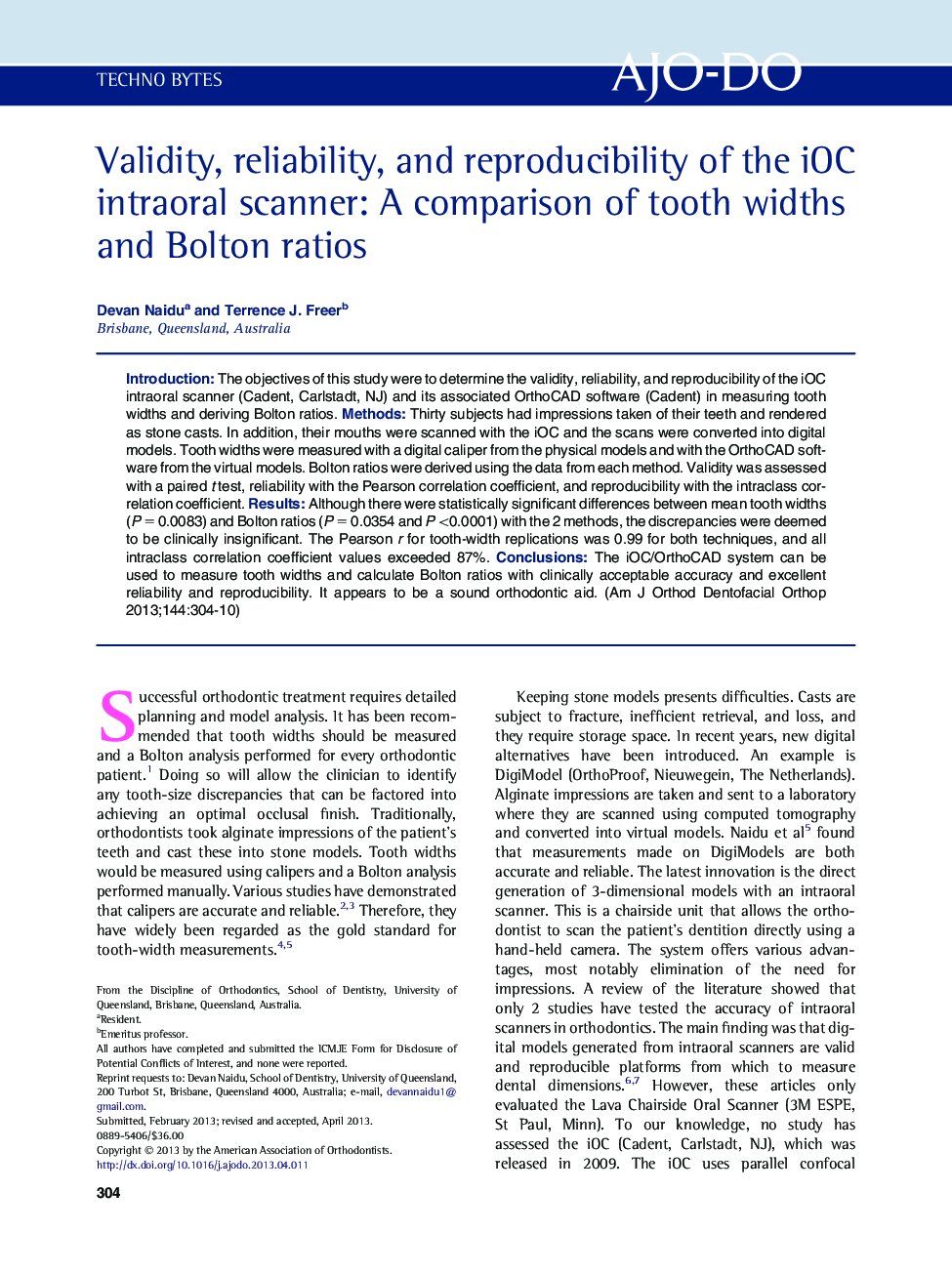| Article ID | Journal | Published Year | Pages | File Type |
|---|---|---|---|---|
| 3116055 | American Journal of Orthodontics and Dentofacial Orthopedics | 2013 | 7 Pages |
IntroductionThe objectives of this study were to determine the validity, reliability, and reproducibility of the iOC intraoral scanner (Cadent, Carlstadt, NJ) and its associated OrthoCAD software (Cadent) in measuring tooth widths and deriving Bolton ratios.MethodsThirty subjects had impressions taken of their teeth and rendered as stone casts. In addition, their mouths were scanned with the iOC and the scans were converted into digital models. Tooth widths were measured with a digital caliper from the physical models and with the OrthoCAD software from the virtual models. Bolton ratios were derived using the data from each method. Validity was assessed with a paired t test, reliability with the Pearson correlation coefficient, and reproducibility with the intraclass correlation coefficient.ResultsAlthough there were statistically significant differences between mean tooth widths (P = 0.0083) and Bolton ratios (P = 0.0354 and P <0.0001) with the 2 methods, the discrepancies were deemed to be clinically insignificant. The Pearson r for tooth-width replications was 0.99 for both techniques, and all intraclass correlation coefficient values exceeded 87%.ConclusionsThe iOC/OrthoCAD system can be used to measure tooth widths and calculate Bolton ratios with clinically acceptable accuracy and excellent reliability and reproducibility. It appears to be a sound orthodontic aid.
